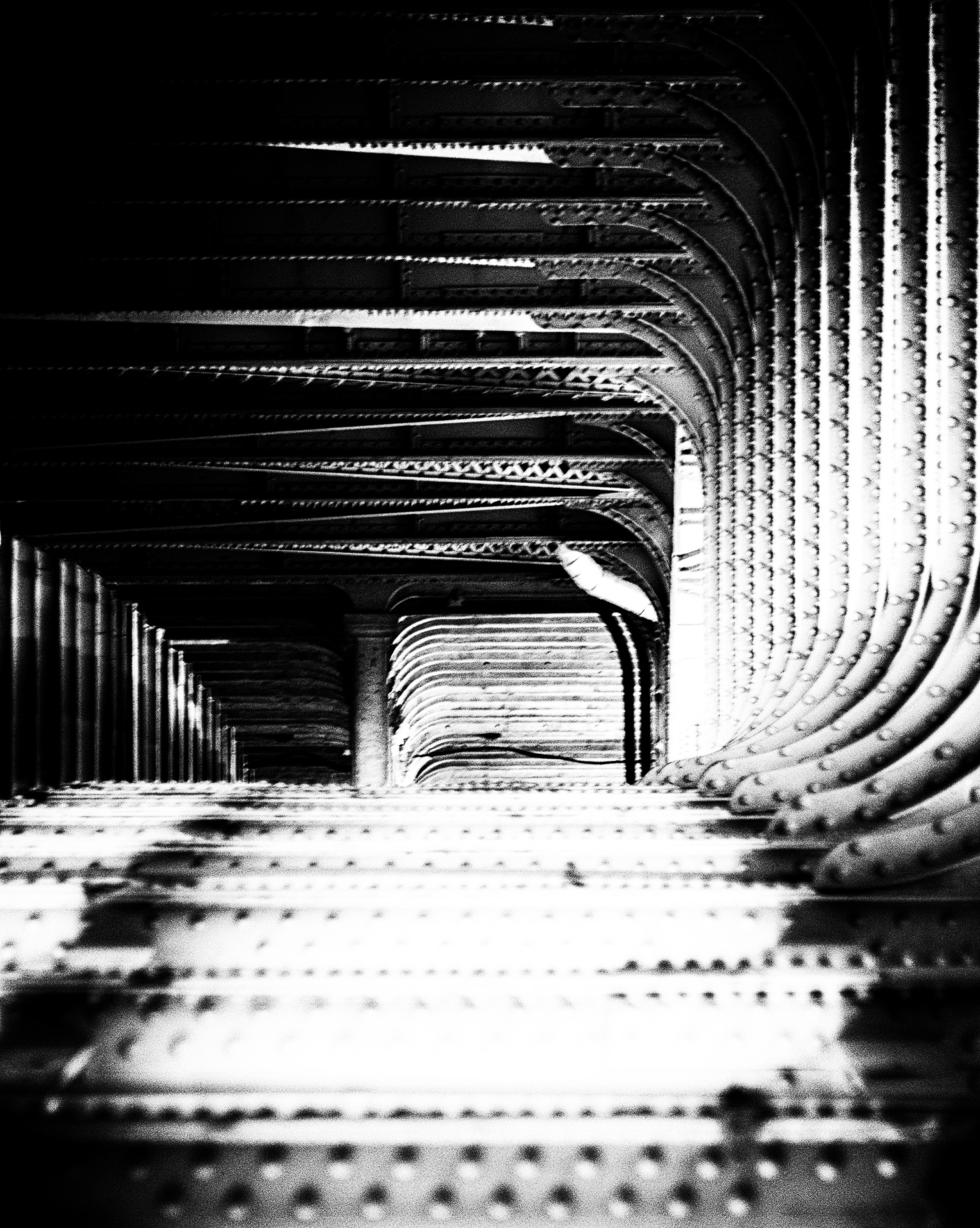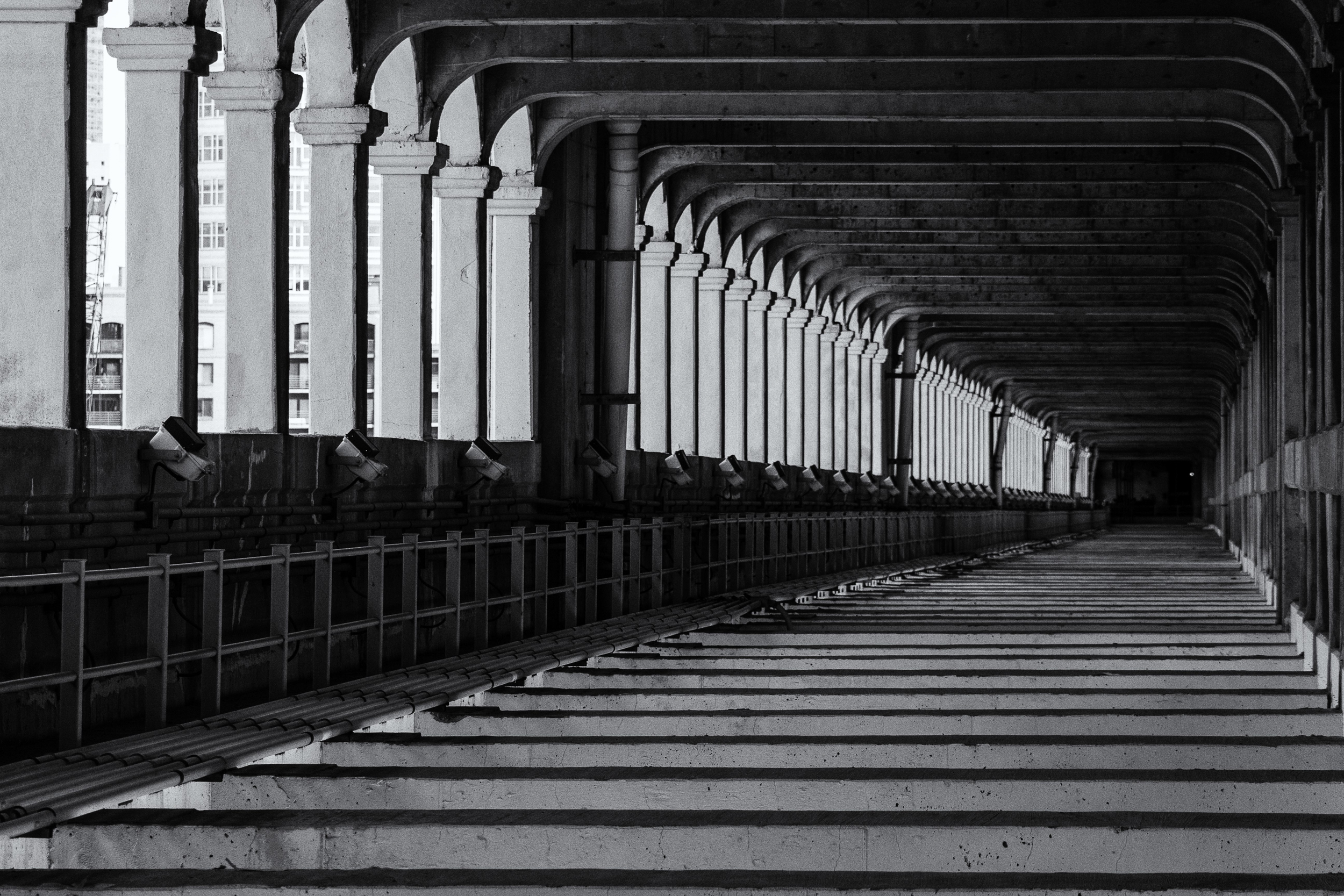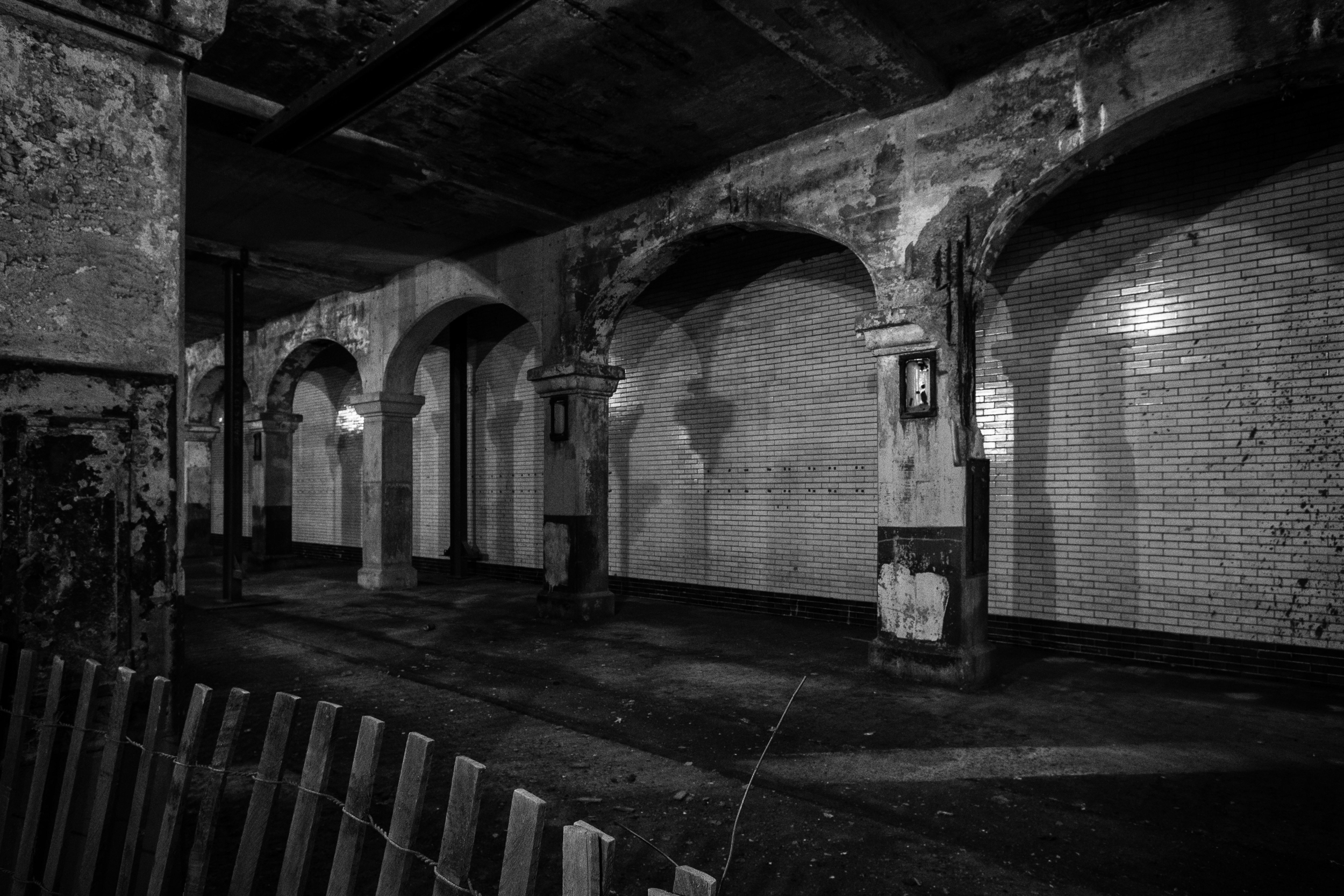Saturday I participated in the self-guided tour of the lower level of the Veterans Memorial Bridge in Cleveland. This part of the bridge hasn't been open to the public since 2013 and it's the first time I've been on it. A strong crowd estimated at 10,000 people turned out.
I've chosen to process my photos in black & white with a grungy feel. At one time this may have been a very nice facility, but it now shows the years of neglect. The structure sets up well for abstract shots and vanishing point perspective, as well as detail shots of the structural steel.
History via Wikipedia https://en.wikipedia.org/wiki/Detroit-Superior_Bridge
The Detroit–Superior Bridge (officially known as the Veterans Memorial Bridge) is a 3,112 foot (949 meter) long through arch bridge over the Cuyahoga Riverin Cleveland, Ohio. The bridge links Detroit Avenue on Cleveland's west side and Superior Avenue on Cleveland's east side, terminating west of Public Square. Construction by the King Bridge Company began in 1914 and completed in 1918, at a cost of $5.4 million. It was the first fixed high level bridge in Cleveland, and the third high level bridge above the Cuyahoga (the first was the Old Superior Viaduct and the second the Central Viaduct, also built by the King Company). At the time of its completion, the bridge was the largest steel and concrete reinforced bridge in the world.
The high level bridge starts on the east at the center line of West 9th Street and Superior, and extends across the Cuyahoga Valley to the junction of West 25th Street and Detroit Avenue. It is 3,112 feet (949 m) long. The total cost, including the land and a right of way, was $5,407,000, split as $1,687,200 was for land and $3,719,800 for the superstructure.[2]
The bridge has 96 feet (29 m) of clearance above the river, and rises to 196 feet (60 m) above the river at the peak of the central span. The original construction included a main deck 75 feet (23 m) wide, with two 15 feet (4.6 m) sidewalks and a 45 feet (14 m) roadway. While the bridge's upper level is for road traffic, the lower level was intended for streetcars. It was built with four sets of these tracks, leaving room for two more, if needed.[2]
The structure includes 12 concrete arches and one steel span. The steel span is 591 feet (180 m) long and crosses the Cuyahoga River. The steel span cost $646,747. About 2,123,300 cubic yards (1,623,400 m3) of concrete and 9,385,000 pounds (4,257,000 kg) of reinforcing steel were used in the construction of the arches.[2] The concrete piles used in the foundation work, if placed end to end, would extend a distance of 28 miles (45 km). Each end of the structure has underground streetcar stations for the trams that operated on the lower deck.
Due to the closure of the streetcar operations, the subway level became unused. In November 1955, ramps to the lower level were closed. The Detroit–Superior Bridge remained a bottleneck during rush hour. A two-year renovation completed in May 1969 added two traffic lanes by narrowing existing sidewalks from 15 to 5 feet and cantilevering the new lanes outside the central arch.[3]
On November 11, 1989 (Veterans Day), the bridge was renamed the Veterans Memorial Bridge.[3] It was added to the National Register of Historic Places on January 18, 1974.
In 2003, Cuyahoga County Commissioners approved the conversion of the two outside traffic lanes for pedestrian and bicycle use.[4] The lower level and subway station are opened to the public for tours a few times per year, typically around Memorial Day, Labor Day, and for the Cleveland Ingenuity Festival. Self-guided tours are free of charge.[5]



















